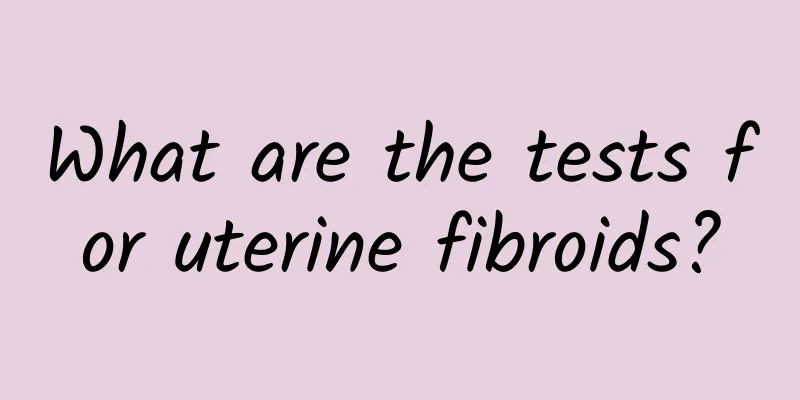What are the tests for uterine fibroids?

|
There are many types of uterine fibroids, and the patient's condition varies from person to person. For a common gynecological disease like uterine fibroids, examination and diagnosis are very important. Let's take a look at what are the daily examinations for uterine fibroids? Let's find out. The main examinations for uterine fibroids are as follows: 1. Diagnostic curettage: Qualified and experienced physicians mainly use probes to detect the depth and direction of the uterine cavity, feel the shape of the uterine cavity, and understand whether there is a mass in the uterine cavity and its location. At the same time, scrape the endometrium for pathological examination to rule out other endometrial lesions. 2. Gynecological examination: The uterus of intramural fibroids is often enlarged and has an irregular surface. For subserosal fibroids, a spherical mass connected to the uterine pedicle may be felt. For submucosal fibroids, the uterus is often uniformly enlarged, and sometimes the fibroids are located in the cervical os or prolapse into the vagina. 3. Ultrasound examination: This is a commonly used auxiliary diagnosis method. Ultrasound examination can be used to understand the growth location and number of fibroids and whether the tumor is uniform, liquefied, or degenerated. Ultrasound examination is helpful in diagnosing uterine fibroids, providing a reference for distinguishing whether the fibroids are degenerated, and helping to distinguish them from ovarian cysts or other pelvic masses. 4. Laparoscopic examination: When fibroids need to be differentiated from ovarian cysts or other pelvic masses, laparoscopic drilling can be performed to pay attention to the size, shape, location and nature of the uterus. 5. Hysteroscopy: The morphology of the uterine cavity and the presence of vegetation can be directly observed through the vagina. It is mainly used to observe the size and location of submucosal fibroids. 6. X-ray: When judging uterine fibroids, an X-ray is needed to make an effective judgment on whether the edge is rough and observe what it looks like. It can also make effective inferences on the severity of the disease symptoms. 7. Hysterosalpingography: This can effectively and accurately locate the number and size of uterine fibroids, so that the treatment can be effective immediately. 8. Detection of the uterine cavity: The nature of the mass and its specific location must be effectively determined. |
<<: Can uterine fibroids be cured?
>>: What are the causes of uterine fibroids?
Recommend
Brief analysis of precautions after artificial abortion
Many people may be familiar with artificial abort...
What is good for patients with adenomyosis?
Patients with adenomyosis generally have prolonge...
Interpretation of the prevention methods of chronic cervicitis
Chronic cervicitis is a common disease among wome...
Six factors that cause hyperprolactinemia
What are the six factors that lead to hyperprolac...
5 major symptoms of menopause in women
Women usually experience five major symptoms befo...
What are the dangers of congenital absence of vagina?
What harm does congenital absence of vagina bring...
What are the symptoms of pelvic inflammatory disease in women
Female pelvic inflammatory disease generally has ...
Everyone should pay more attention to the treatment of adnexitis!
Patients with adnexitis all know that there are m...
Causes of severe cervical precancerous lesions
We must actively grasp the causes of cervical pre...
Shorten the weight loss period, massage before meals to eliminate fat and control appetite
After the Chinese New Year, the company's spr...
What are the symptoms of uterine fibroids?
Did you know that uterine fibroids can be divided...
How long after a miscarriage can a pregnant woman have a child? Doctors recommend having a child after one year
Getting pregnant as soon as possible is something...
Causes of bacterial vaginosis
There are many factors in our lives that cause ba...
Losing weight and getting fatter and thinner? It's the seasonal changes that affect
In summer, we wear cooler clothes or cover oursel...
What are the causes of irregular menstruation in women? What are the symptoms of irregular menstruation in women?
Irregular menstruation in women mainly refers to ...









